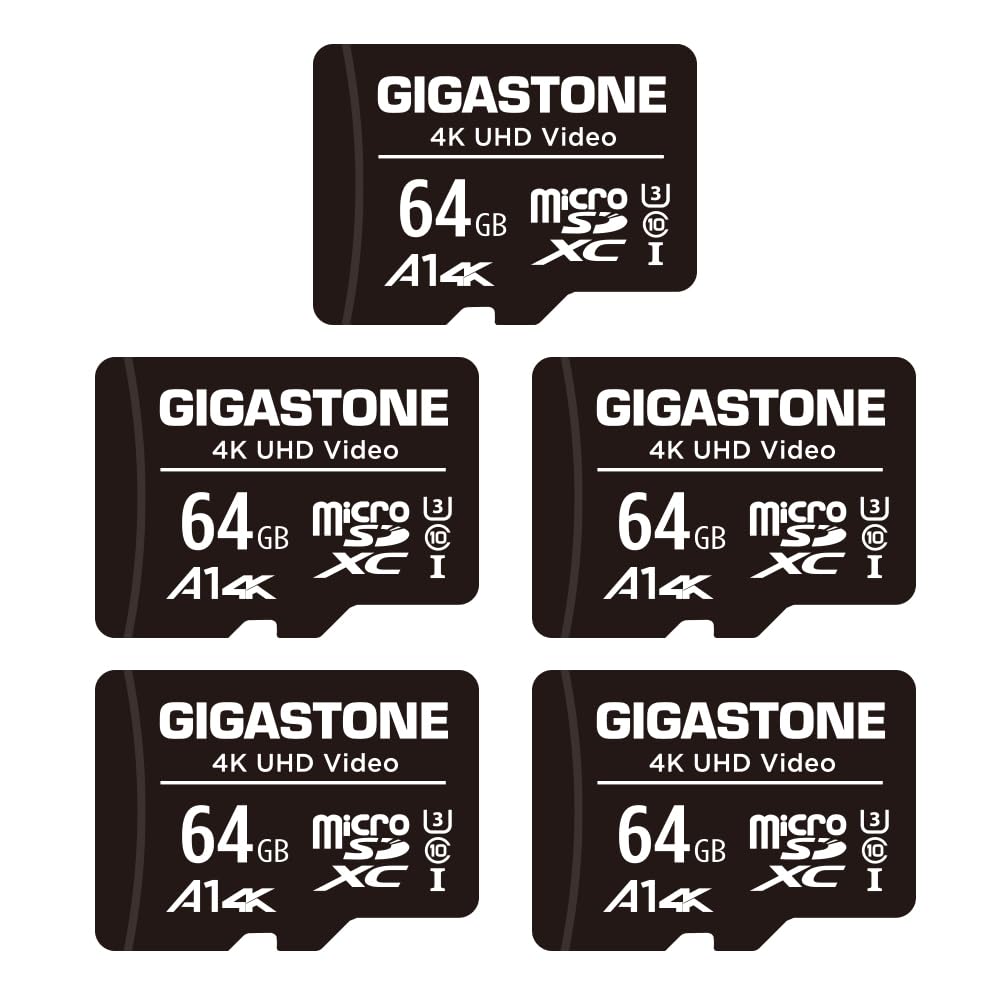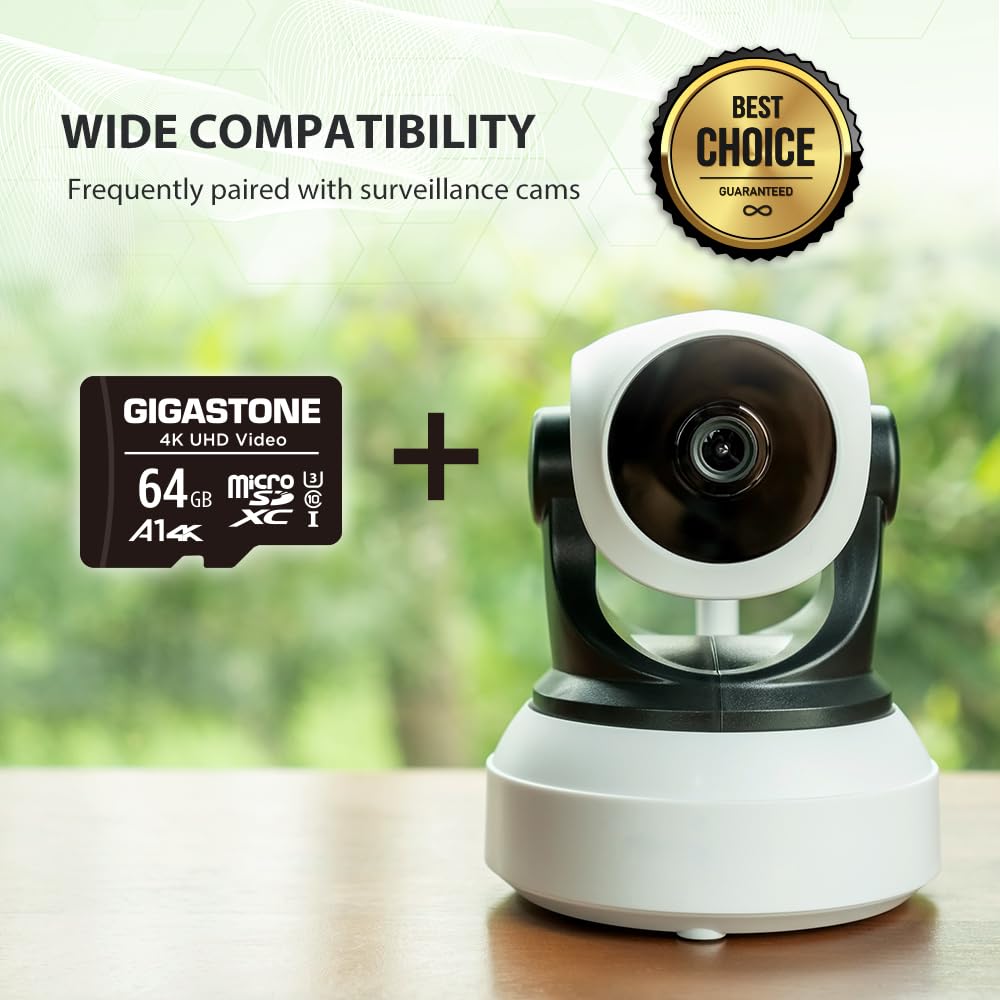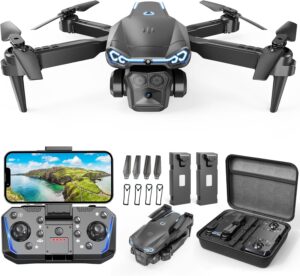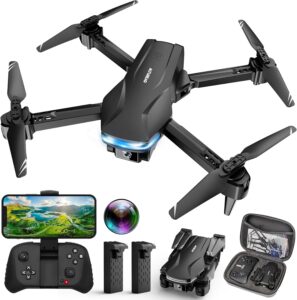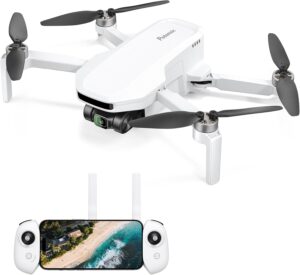Are we all looking for a no-drama way to add reliable 4K-ready storage to our cameras, drones, and phones without spending a small fortune?
What Is the GIGASTONE 64GB Micro SD Card 5-Pack?
We’re talking about a practical, budget-friendly set of five microSDXC cards that each hold 64GB and claim A1 and V30 performance. They’re meant to handle 4K video recording and everyday app storage, while shrugging off the bumps and splashes of real life, like being dropped behind the couch or forgotten in a coat pocket during a surprise rainstorm.
These cards come with full-size SD adapters, which means we can use them in DSLRs and card readers without juggling extra gadgets. We appreciate that kind of flexibility, especially when our bag already sounds like a maraca of dongles and cables.
GIGASTONE 64GB Micro SD Card 5-Pack, A1 V30 4K Video Recording, Surveillance Security Cam Action Camera Drone Professional, 90MB/s Micro SDXC UHS-I A1 Class 10, with Adapters
Key Features at a Glance
We like to see the essentials in one place because life’s too short to memorize abbreviations. This breakdown keeps the specs honest and easy to scan.
Here’s the quick summary of what we’re getting in this 5-pack set.
| Feature | Details |
|---|---|
| Capacity | 64GB per card (x5) |
| Card Type | microSDXC (with full-size SD adapters included) |
| Performance Ratings | A1 (for apps), V30 (Video Speed Class 30), Class 10, UHS-I |
| Advertised Speeds | Up to 90 MB/s read, up to 30 MB/s write |
| Video Support | 4K Ultra HD recording and playback (device-dependent) |
| Compatibility | Cameras, security cams, action cams, drones, laptops, tablets, PCs, smartphones |
| Durability | Waterproof, shockproof, temperature-proof, X-ray proof |
| Warranty | Gigastone 5-year limited warranty |
We see a familiar combination here: UHS-I bus with V30 for reliable 4K, plus A1 for snappy app launches and file handling. Each of these pieces serves a practical role, so we’ll take a closer look at what they actually mean for our day-to-day use.
What A1 Means for Everyday Use
A1 refers to the Application Performance Class, which speaks to how efficiently a card handles small random reads and writes. That’s a fancy way of saying how fast apps can load data, write settings, and deal with all the tiny files that make a phone or tablet feel responsive.
For us, that translates into better results when we move apps or app data to the card (if our device allows it), and smoother performance when we store large photo libraries or offline media. It’s not the same as having a phone with top-tier internal storage, but it’s noticeably better than older or generic cards.
What V30 Means for Video
V30 is the part of the spec that gives us a baseline for video: it guarantees a sustained write speed of at least 30 MB/s. Sustained is the important word; 4K footage is hungry, and those little pauses and hiccups we don’t see in our daydreams can ruin a real recording.
If our camera or drone records 4K at common bitrates (often under 100–120 Mbps), a V30 card should keep up. It’s not meant for extremely high-bitrate or high-frame-rate modes (like certain 5.3K/120 fps settings), but it handles the 4K that most folks shoot without anxiety.
Unboxing and First Impressions
We open the pack, and there’s a predictable chorus of tiny rectangles lined up like cookies on a tray. With five cards and adapters, the set feels generous, which is helpful because small things have a habit of slipping under couches and into mysterious regions of backpacks.
The labeling is clear enough to spot in a case, and the adapters seat the cards snugly. We like that the adapters are included because it keeps our workflow simple—no hunting for the “other” reader when we just want to get our footage onto a laptop.
Setup: Formatting and Getting the Most Out of 64GB
A quick note on formatting: because these are 64GB microSDXC cards, the default file system is usually exFAT. That’s a good thing, as exFAT supports larger files and is broadly compatible across modern devices and operating systems.
We prefer formatting cards in the device that will use them most—a camera, a drone, or a phone. Doing so sets up the correct file structures and reduces weirdness later. If we move a card between devices, we reformat it to keep things tidy and reduce the chance of file fragmentation or naming conflicts.
Compatibility Notes You Should Know
Not all devices are equally modern. Some older cameras or phones only support SDHC (up to 32GB), and these are microSDXC (64GB), so we should check the device manual before we buy or insert. It sounds fussy, but it saves time and grumbling.
Also, while these cards are UHS-I, many devices still top out at that standard anyway. If our hardware supports a UHS-II card, we won’t see UHS-II speeds with a UHS-I card, but we still get the V30 reliability that 4K needs. A quick check of our camera’s recording modes and bitrate helps confirm this set is a match.
Performance: What We Can Expect in Real Use
The card’s advertised speed is up to 90 MB/s read and up to 30 MB/s write, which aligns with typical UHS-I V30 cards. Read speeds matter when we’re copying footage to a computer; write speeds matter when we’re recording video or shooting bursts of photos.
In many real-world transfers with a decent UHS-I card reader, read speeds often land in the 80–90 MB/s range, while sustained writes usually hover around that 30 MB/s V30 guarantee. Different devices, file sizes, and readers can nudge those numbers up or down a bit, but they stay in a range that keeps our workflows smooth.
Action Cameras and Drones
Action cams and drones are the fussiest customers when it comes to cards. They push a continuous stream of data and get cranky if the card falls even slightly behind. For common 4K modes—say, 4K30 or 4K60 on many action cameras—a V30 card is the baseline we trust.
If we’re using a camera that offers super-high-bitrate modes, we check the manufacturer’s recommended card list just to be thorough. Most of the time, for ordinary 4K and high-quality 1080p slow motion, a V30 card like this one keeps things steady.
Surveillance and Security Cameras
Security cams write almost constantly, which is a different kind of stress than filming a family barbecue. While these cards are marketed for security use and will handle it fine for many setups, long-term 24/7 write workloads can be tough on any non-“endurance” card.
We like the 5-pack for this exact reason: it lets us rotate cards. Swapping them out periodically and checking footage helps spread out wear and makes it easier to back up when something important happens. If our camera is truly grinding away at the card around the clock, we might consider a specialized endurance model for the long haul, but for many use cases, this pack does the job.
Laptops, Tablets, and Phones
As extra storage, these cards are friendly and unfussy. They swallow photo libraries, offline streaming downloads, and big chunky files without complaint. A1 helps with app data, though we remember that moving entire apps to external storage is a phone-by-phone decision—and sometimes a phone-by-phone gamble.
On tablets and laptops with microSD slots, these cards make an easy expansion option. We’ve used this approach to keep our internal drive uncluttered, and it’s pleasantly boring to never think about space when we’re editing a few clips on the road.
File Transfers and Workflow
Here’s where the read speed shines. Moving a batch of 4K clips to a computer at around 80–90 MB/s feels satisfyingly brisk. If we’re shuttling footage between multiple cards, the 5-pack lets us keep projects separated—one card for the birthday video, one for the gardening time-lapse, one for the drone shots of us failing to look heroic on a scooter.
Labeling cards is key. A sharpie or tiny sticker can save us from opening six folders called “DCIM” when all we want is that one clip where the dog leaps like a gymnast.
Reliability and Durability
The cards are waterproof, shockproof, temperature-proof, and X-ray proof, which mostly translates to basic peace of mind. We don’t swim with them or store them in a volcano, but it’s comforting to know they aren’t fragile little orchids.
We always pair durability claims with good handling habits. That means not forcing a card into a slot, not leaving it in a hot car, and not using it as a bookmark in a waterproof book—tempting as that might be when our day gets weird.
The Value of a 5-Pack
There’s a quiet genius in a five-pack of microSD cards. We can set one aside for backups, put one in a drone, one in the action camera, one in a phone, and still have a spare without becoming a minimalist storage monk.
It also helps with redundancy. If one card starts behaving oddly, we can replace it immediately and keep working. Plus, a pack is easier to keep track of than five solo cards purchased on different Tuesdays at different stores.
Everyday Scenarios Where This Pack Really Clicks
We like to imagine all the tiny ways gear makes life easier, because it’s rarely a cinematic montage. It’s usually a series of small conveniences that add up to less friction.
- Family trips: One card per day or per kid, so we don’t mix the beach with the museum or the dog park with the quiet lunch that devolved into chaos.
- Hobby filmmaking: Keep separate cards for A-roll, B-roll, and audio, or for different clients, so edits start organized.
- Drones: Cards labeled by location or flight session, so we can find “Sunset_Farm” without rerunning a mental scavenger hunt.
- Security cameras: Rotation schedule—swap on Sundays, review footage, store what matters.
- Phones and tablets: Dedicated card for offline media and one for travel, so nothing gets lost in the shuffle.
Little Touches That Make a Difference
We like that adapters are included because it spares us the accidental purchase of the wrong reader. We also appreciate the A1 rating for casual app storage, knowing it won’t turn our device into a stubborn mule.
And yes, the warranty matters. A 5-year limited warranty is reassuring, especially when we’re pushing the cards through a steady routine of formatting, recording, and file shuffles.
How It Compares to Well-Known Alternatives
We don’t live in a vacuum, and neither do memory cards. There are heavy hitters out there—cards with faster write speeds, UHS-II buses, or “endurance” labels designed for surveillance.
Compared to premium UHS-II cards, this set is slower, but it’s also far more affordable and widely compatible. Compared to pricier UHS-I V30 cards from big-name brands, the real-world difference for typical 4K and 1080p shooting is often minimal unless our camera demands unusually high bitrates.
If we shoot extreme 4K modes or high-frame-rate 5.3K, we may want a card with higher sustained write speeds or a manufacturer-approved list to avoid recording stops. If our security camera writes constantly, an endurance-focused card might outlast standard models. For everything else, this GIGASTONE pack hits a sweet spot between performance and value.
A Practical Guide to 4K Bitrates and What That Means for Us
We can think of 4K recording like a faucet filling a bucket. If the faucet pours more water (data) than the drain (the card’s write speed) can handle, the bucket overflows and our recording fails. A V30 card gives us a drain that clears at least 30 MB/s, which suits many 4K settings.
Most consumer 4K footage in common modes doesn’t exceed that, but some action cam and drone profiles do, especially at high frame rates or with high-efficiency codecs and high bitrates. Checking our device’s manual once saves us from guessing. If we stick to 4K30 or 4K60 at moderate bitrates, we’re on solid ground.
Best Practices to Avoid Data Loss
We have a short ritual with memory cards that has saved us more than once. It’s not complicated, and it doesn’t require chanting.
- Format in the device that will use the card.
- Eject safely before removing from a computer.
- Don’t fill a card to 100% if you can help it; leave a little wiggle room.
- Periodically reformat after big projects to keep file systems clean.
- Use a reliable card reader and a short, good-quality cable.
- Keep cards dry and clean; store them in cases rather than free-range pockets.
- Buy from reputable sellers to avoid counterfeits, and test new cards before mission-critical use.
- Back up footage right away; two copies are better than one heroic speech after the fact.
Testing New Cards the Easy Way
When we get a new pack, we set aside time to run a quick full-card write-and-verify test using free tools. It takes a while, but it reduces the chance of discovering a problem after we’ve filmed something irreplaceable, like a wedding or our uncle attempting parkour.
We also shoot a short 4K clip in our camera, then play it back to confirm recording stability. Five minutes of testing is worth the peace of mind.
Battery Life and Heat: The Quiet Variables
Cards don’t usually cause major heat or battery issues, but poorly matched cards and devices can make a camera work harder. A V30 card in a device designed for 4K shouldn’t struggle, but if the camera complains, we listen.
We try not to record in extreme heat for long stretches, both for the camera’s sake and ours. If our device shows a heat warning, we give it a rest and switch cards if needed.
Warranty and Support
Gigastone backs the cards with a 5-year limited warranty. We like knowing we have recourse if something goes wrong that isn’t our fault, like a card that decides to be a minimalist and hold nothing.
A warranty isn’t a substitute for backups, but it’s a reassuring safety net. If we run into trouble, we keep proof of purchase and take a clear photo of the card’s label before contacting support—it makes the process smoother.
Table: Which Card for Which Job?
Sometimes we want a quick nudge in the right direction. This simple matrix helps match tasks to expectations.
| Use Case | Is This 5-Pack a Good Fit? | Notes |
|---|---|---|
| 4K action camera (4K30/4K60 typical modes) | Yes | V30 is designed for these workloads. Check device bitrate recommendations. |
| Drone filming (consumer models) | Yes | Works for most standard 4K profiles. For extremely high bitrates, confirm specs. |
| DSLR/mirrorless photo bursts | Yes | Great for stills and mixed photo/video work at common settings. |
| Security camera (moderate duty) | Yes | Suitable, especially with card rotation and periodic review. |
| Security camera (24/7 high-duty) | Maybe | Consider endurance-rated cards if writing constantly around the clock. |
| Smartphone storage | Yes | A1 helps with app data; supports large media libraries. |
| Tablet/laptop storage expansion | Yes | Solid for media, documents, and casual editing on the go. |
| Professional cinema cameras | Maybe | Many require higher write speeds; check camera’s approved card list. |
We like to keep things simple. If we spend our days filming in everyday 4K and managing a reasonably normal set of files, this set makes sense. If our workflow lives on the edge of what consumer gear can do, we match the card accordingly.
Pros and Cons
We love a neat list, especially when it prevents us from waxing poetic about memory cards for 12 minutes straight.
Pros
- V30 rating supports reliable 4K recording in common modes
- A1 rating improves app and everyday file performance on mobile devices
- Five cards plus adapters offer flexibility, backups, and segmentation of projects
- Strong value for the feature set; widely compatible UHS-I standard
- Durable: water, shock, temperature, and X-ray protection
- 5-year limited warranty adds peace of mind
Cons
- Not designed for extreme high-bitrate or specialty cinema modes
- UHS-I limits peak performance vs. UHS-II cards in supported devices
- For heavy 24/7 surveillance, endurance-rated cards are often better suited
- 64GB per card fills quickly with high-bitrate 4K; frequent offloads recommended
A Friendly Reality Check on Capacity
At 64GB, each card handles a good chunk of 4K footage, but not an entire saga. Depending on bitrate, we might get an hour or a bit more of 4K, or several hours of 1080p. For long events, we bring extra cards and swap before the card becomes a game of musical chairs.
The upside is compartmentalization. Instead of placing all our precious eggs in one 512GB basket, we divide our footage across multiple smaller cards. If one gets misplaced or corrupted, we limit the damage.
Security Camera Use: Rotation Strategy
When we use these in cameras that write a lot of data, we schedule a simple rotation. For example: Mondays we swap Card A for Card B, Wednesdays B for C, Fridays C for D, and stash E as a spare. We review footage during swaps, back up anything important, and reformat in the camera.
This habit keeps wear distributed and gives us checkpoints to catch problems early. It’s also a good reminder that “set and forget” is an alluring myth in the land of electronics.
Labeling, Storage, and Organization
We once thought we had a good memory for what was on which card. We were wrong. Now we label them with a short code—like “D-AUG” for drone August—and a tiny number for the sequence.
We store cards in a small, protective case and keep adapters in the same pouch. If we need to lend a card, we note it in our phone. This sounds excessive until the day we realize we haven’t seen Card 3 since the camping trip. Systems save us from ourselves.
Handling 4K Workflows Without Tears
A straightforward workflow goes like this: record, offload promptly, verify files, back up, reformat card in the device. If we’re mid-project, we still back up to at least two places—external drive and cloud, or two drives in different rooms.
The worst feeling is not knowing if a file made it from the card to the computer. We always verify a few key clips before we reformat, even if we’re in a hurry. That extra minute of double-checking has saved us from many “where did it go?” spirals.
Maintenance: Keeping Cards Healthy
We treat memory cards like reusable notebooks. We don’t scratch through the page; we start a new one. That means deleting files on a computer isn’t the same as a clean start. A proper reformat in the camera clears the whole page and makes the next session smoother.
If a card behaves oddly—slower than usual, error messages, corrupted files—we migrate the data, retire the card for important work, and test it on a lazy afternoon. Cards are affordable enough that we’d rather replace a suspicious one than risk footage.
What We Like About the GIGASTONE 64GB Micro SD Card 5-Pack
We like that it’s straightforward and honest about what it is: a V30, A1, UHS-I set with adapters. The five-pack format suits the way we actually use storage—one here, one there, backups everywhere.
We also like the durability claims and the warranty because they show a bit of confidence in the product. And most of all, we like that these cards sit in the sweet spot for everyday 4K shooting without making us feel like we’re babysitting our gear.
What Could Be Better
We’ll be the first to say that 64GB fills up quicker than we expect when filming 4K. We adjust by carrying two cards per session or offloading more often. A mixed-capacity bundle could be handy, but this set keeps pricing simple and accessible.
An endurance variant for security use would also be nice to see alongside the pack. That said, for moderate-duty surveillance and general recording, these cards are capable and sensible.
Frequently Asked Questions
We’ve asked these ourselves—and then pretended we always knew the answers.
Q: Will these cards work in my phone? A: If your phone supports microSDXC (most modern Android phones that have a slot do), then yes. iPhones don’t support microSD cards.
Q: Can I record 4K video without dropped frames? A: For common 4K settings that fall within V30’s sustained write capability, yes. Check your device’s recommended card list for unusually high-bitrate modes.
Q: Are these UHS-II cards? A: No, these are UHS-I. They’re widely compatible and cost-effective, but they won’t reach UHS-II speeds even if used in a UHS-II device.
Q: Do I need to format the card before first use? A: We recommend formatting in the device you plan to use. It’s quick and avoids headaches.
Q: Are these good for 24/7 security camera recording? A: They can work, especially if you rotate cards. For nonstop round-the-clock recording, an endurance-rated card is often the best choice.
Q: What’s the difference between Class 10, A1, and V30? A: Class 10 refers to a basic write speed floor. A1 improves random I/O for app use. V30 guarantees sustained writes of at least 30 MB/s for video recording.
Q: Can I use these in a DSLR with an SD slot? A: Yes. Use the included SD adapter, and you’re good to go.
Q: How many hours of 4K can I store on 64GB? A: It depends on bitrate. As a rough guide, at ~100 Mbps (12.5 MB/s), you might fit around 80 minutes. Higher bitrates reduce total time.
Q: Will they survive airport X-rays? A: Yes. They’re rated X-ray proof, and modern airport scanners shouldn’t trouble them.
Q: Is there a warranty? A: Yes, a 5-year limited warranty from Gigastone.
Who Should Buy This 5-Pack
If we record 4K on action cameras, drones, or mirrorless cameras at typical bitrates, this set makes a lot of sense. It’s also great if we need multiple cards for different devices or projects and want a consistent set instead of a random drawer of mismatched media.
For phones, tablets, and laptops, the cards are steady companions for expanding storage. The A1 rating helps with responsiveness, and the adapters keep file transfers simple.
Who Should Consider Alternatives
If we shoot extremely high-bitrate or high-frame-rate video modes, or if our camera manufacturer insists on specific cards for top-tier modes, we should follow those guidelines. And if our security cameras write constantly 24/7, endurance-rated cards are usually a smarter long-term choice.
If we frequently need to capture long sessions without swapping, larger capacities like 128GB or 256GB per card can be more convenient, though pricier.
A Short Word on Readers and Cables
Good cards deserve a good reader. A UHS-I reader with a stable USB connection prevents bottlenecks and weird transfer errors that masquerade as “card issues.” We also avoid USB hubs that have already started a small war with our other peripherals.
If we use the SD adapters, we insert and remove them gently. It’s not a wrestling match; it’s a handshake.
Environmental Claims and Real Life
The waterproof, shockproof, temperature-proof, and X-ray-proof claims offer a useful safety buffer. We don’t treat them like superpowers, but we do take comfort in knowing that a light splash or a minor tumble won’t doom our files.
We still keep cards in cases and avoid extreme conditions when possible. We’ve learned there’s a difference between “can survive” and “should be asked to prove it.”
An Honest Look at Price-to-Performance
This is where the GIGASTONE 64GB Micro SD Card 5-Pack shines. For the cost, we get five V30, A1, UHS-I cards with adapters and a 5-year limited warranty. It’s the sort of value that lets us kit out a household of devices or a small production setup without resorting to rationing.
If we seize the occasional sale, this pack often undercuts buying singles by a comfortable margin. That efficiency matters—spending less on storage means we can spend more on batteries, lights, or that lens we keep pretending we don’t want.
What Using a 5-Pack Feels Like Over Time
We start off cautious, labeling everything and being industrious about backups. Then we fall into a rhythm. Card 1 becomes the drone card. Card 2 lives in the action camera. Card 3 is for the security cam in the living room that we swear is not for checking if the dog gets on the sofa.
When one card needs a break, we swap it out and keep going. The set becomes part of our routine, like keeping coffee filters stocked. Not glamorous, but essential.
The Bottom Line on 4K With UHS-I
For everyday 4K recording, UHS-I V30 is a reliable companion. We can get fancy with UHS-II, but many of our devices won’t use that extra speed, and the price jump can be significant.
If we keep our recording settings within V30’s comfort zone and use a sensible workflow, we’ll have a solid experience. The emphasis is on “sustained” write speed, which is the unsung hero of clean video files.
The Hidden Perks of Consistent Gear
Matching cards across devices helps with troubleshooting and predictability. When everything is the same model, we don’t wonder if Card X is the odd one out causing trouble. We can also swap cards between devices without worrying about wildly different performance.
Five identical cards give us a tidy little ecosystem. It’s like having identical socks—less romance, more harmony.
Final Verdict
We’re fans of practical gear that does its job without theatrics, and the GIGASTONE 64GB Micro SD Card 5-Pack fits that profile. With A1 and V30 ratings, up to 90 MB/s read and 30 MB/s write speeds, UHS-I compatibility, and included adapters, it covers the bases for 4K recording, day-to-day file shuffling, and mobile storage.
For most of us shooting standard 4K on action cams, drones, and mirrorless bodies, this set is easy to recommend. It’s durable, backed by a 5-year limited warranty, and priced in a way that lets us carry spares without clutching our hearts. If we live in the land of extreme bitrates or nonstop surveillance workloads, we might choose a specialized card instead. But for the wide middle of real-world use, this 5-pack is a friendly, dependable workhorse that keeps our footage flowing and our days pleasantly uneventful.
Disclosure: As an Amazon Associate, I earn from qualifying purchases.
